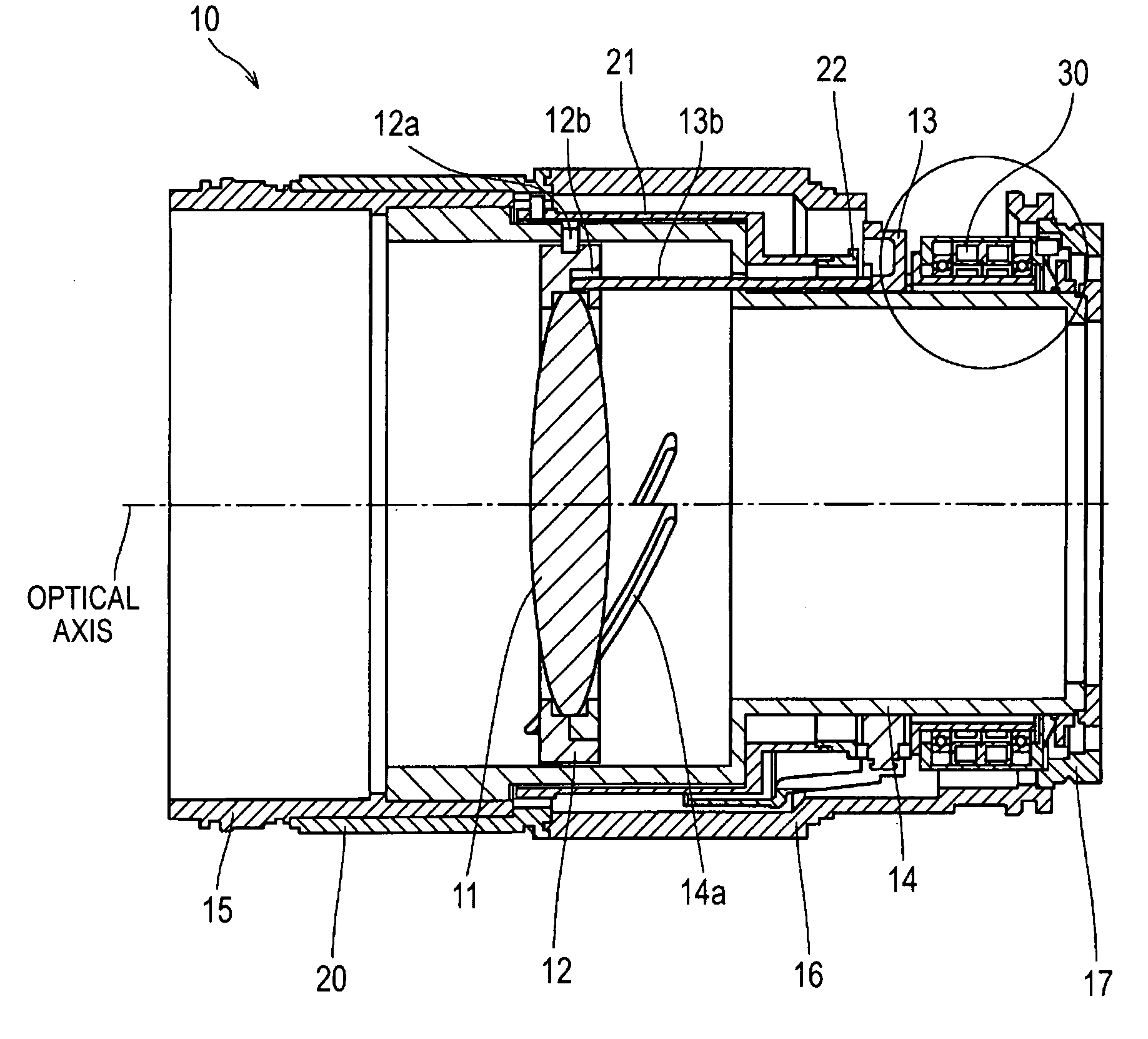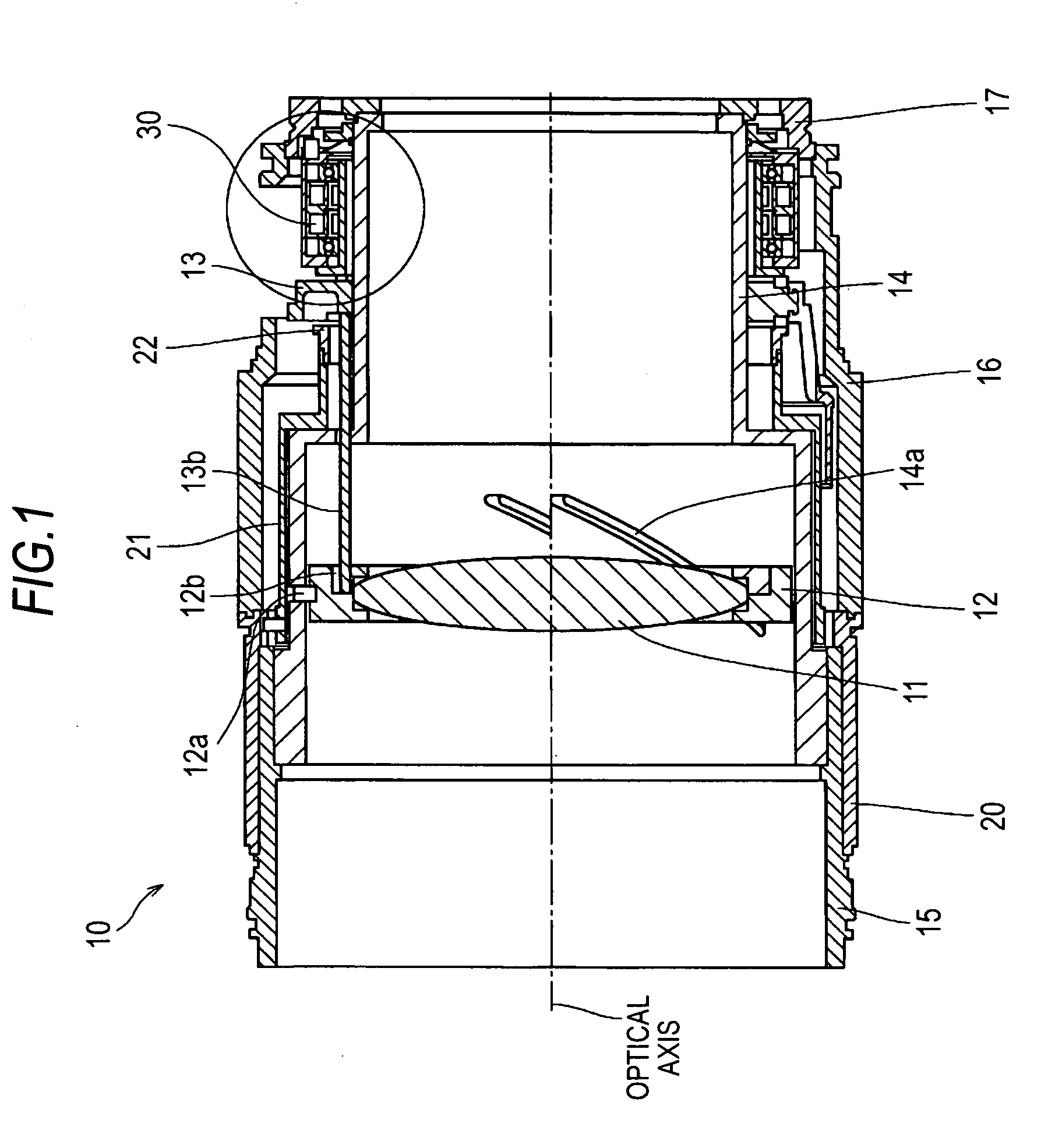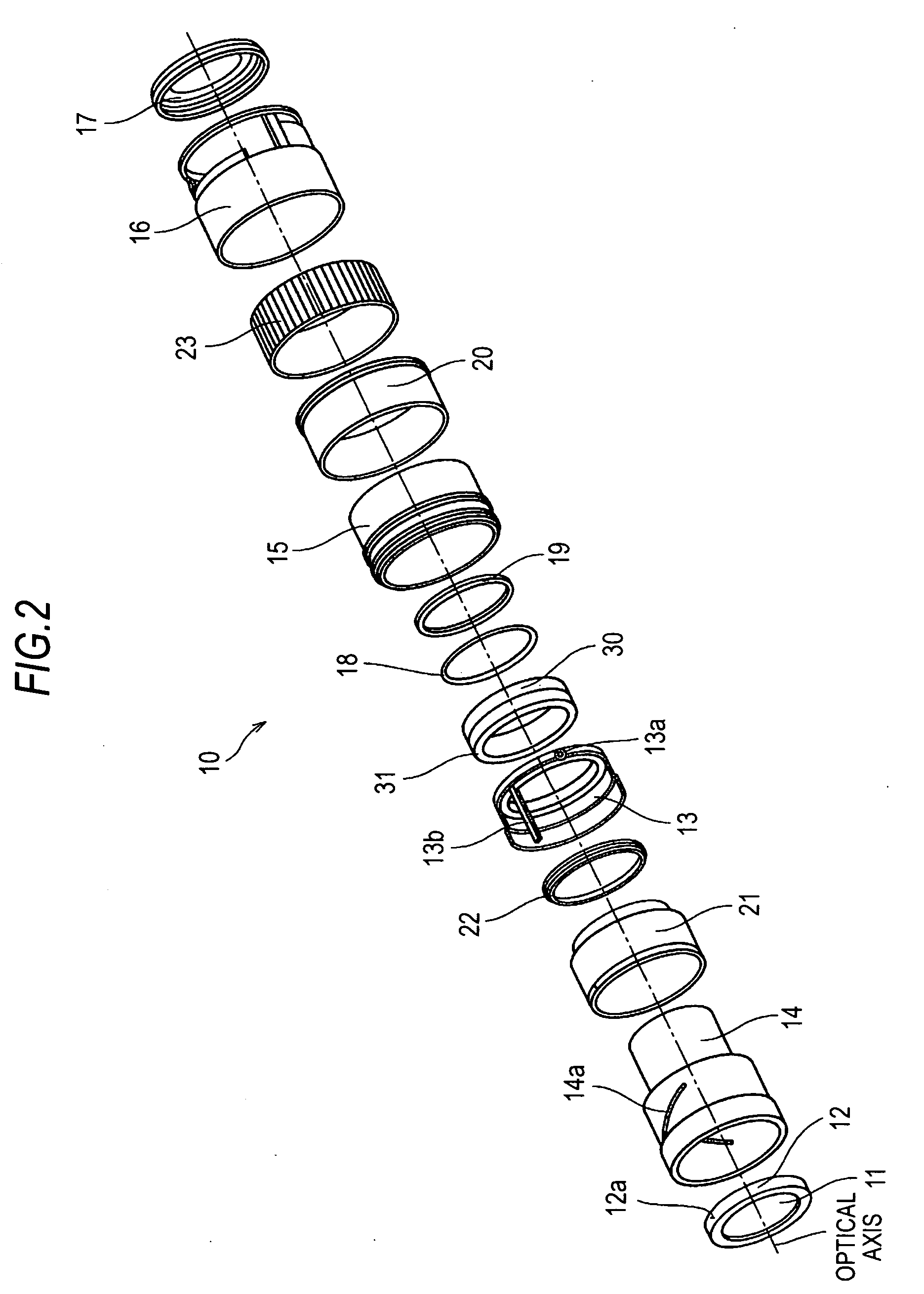Lens barrel and imaging apparatus
a technology of imaging apparatus and lens barrel, which is applied in the direction of mountings, optics, instruments, etc., can solve the problems of unsolved cost problems, inability to disclose at all the position of stop, and image disadvantageously going out of focus
- Summary
- Abstract
- Description
- Claims
- Application Information
AI Technical Summary
Benefits of technology
Problems solved by technology
Method used
Image
Examples
first embodiment
[Example of Cross Section of Exchangeable Lens Barrel]
[0030]FIG. 1 is a cross-sectional view of an exchangeable lens barrel 10 taken along the optical axis, as a lens barrel according to an embodiment of the invention.
[0031]FIG. 2 is an exploded perspective view of the exchangeable lens barrel 10 shown in FIG. 1.
[0032]As shown in FIGS. 1 and 2, the exchangeable lens barrel 10 of the first embodiment includes a lens holding frame 12 that holds a lens 11 (a focus lens in the first embodiment), a manual ring 20 that is used to rotate the lens holding frame 12 manually, a coreless stepper motor 30 that electrically drives the lens holding frame 12, and a differential ring 13 (corresponding to the intermediate ring in the claims) that transfers the rotational force produced by the manual ring and the driving force produced by the stepper motor 30 to the lens holding frame 12.
[0033]The lens holding frame 12, the manual ring 20, the stepper motor 30, and the differential ring 13 are arrang...
second embodiment
2. Second Embodiment
[Example of Manual Focus Operation]
[0062]FIGS. 6A and 6B diagrammatically show an example of the manual focus operation carried out in an exchangeable lens barrel 50 (second embodiment) as a lens barrel according to an embodiment of the invention.
[0063]As shown in FIGS. 6A and 6B, the exchangeable lens barrel 50 of the second embodiment includes the same differential ring 13, rollers 13a, synchronization key 13b, manual ring 20, and stepper motor 30 as those in the exchangeable lens barrel 10 of the first embodiment shown in FIGS. 5A and 5B. The rollers 13a are rotated not only in synchronization with the rotation of the manual ring 20 but also in synchronization with the rotation of the stepper motor 30. The differential ring 13 is rotated as the rollers 13a are rotated, and the rotary motion of the differential ring 13 is transferred to the lens holding frame 12 (see FIG. 1) via the synchronization key 13b.
[0064]The exchangeable lens barrel 50 of the second em...
PUM
 Login to View More
Login to View More Abstract
Description
Claims
Application Information
 Login to View More
Login to View More - R&D
- Intellectual Property
- Life Sciences
- Materials
- Tech Scout
- Unparalleled Data Quality
- Higher Quality Content
- 60% Fewer Hallucinations
Browse by: Latest US Patents, China's latest patents, Technical Efficacy Thesaurus, Application Domain, Technology Topic, Popular Technical Reports.
© 2025 PatSnap. All rights reserved.Legal|Privacy policy|Modern Slavery Act Transparency Statement|Sitemap|About US| Contact US: help@patsnap.com



